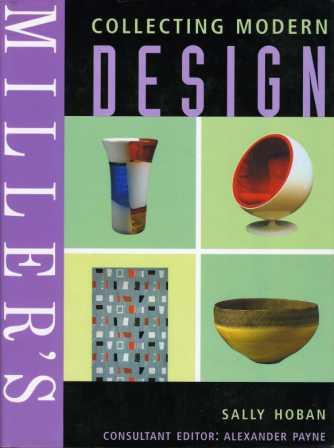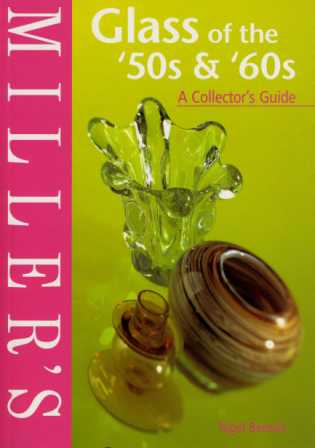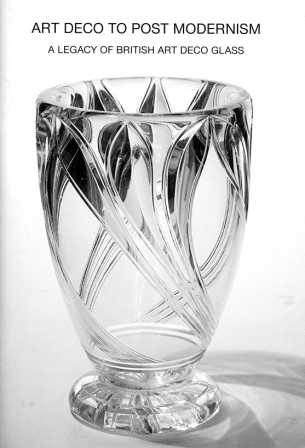|
Nigel Benson is an experienced lecturer who regularly gives lectures, most notably on a range of 20th century British glass
topics, but is well qualified on topics covering both Continental and Scandinavian glass, including post-war
Czech. He is happy to create fresh lecture topics on request. Unlike many lecturers who refer to notes, Nigel prefers
to prepare thoroughly in order to talk directly to the audience with the aim of creating an experience whereby
no lecture is exactly the same.
Established
Lecture Topics:
POST-WAR
GLASS ACROSS EUROPE: An
overview of glass produced in the post-war era, concentrating on the UK, Scandinavia, Czechoslovakia and Italy, comparing
designers and countries, their influences upon one another and illustrating how design changed to reflect the period. BRITISH
POST-WAR GLASS: From the immediate post
war years to the beginning of the Studio movement at the end of the 1960’s Britain boasted innovative young designers,
many of whom are now fully recognised, while others not. Both are included in this overview of the designs of post-war British
glass, which aims to show the progression from the pre-war hangover through to the pioneering work of Sam Herman and his acolytes
who formed the first Studio glass outlet in the UK, ‘The Glasshouse’.
BAXTER & STENNETT-WILLSON, PARALLELS AND COINCIDENCES: A look at the
designs of Geoffrey Baxter at Whitefriars and of Ronald Stennett-Willson at Kings Lynn and Wedgwood in particular, but also
referring to his designs at Lemington Glass. As suggested by the title both parallels and possible coincidences by these lauded
British designers are examined along with some possible outside influences. FIFTY YEARS OF BRITISH ‘ART’ CUT GLASS, 1920’s to the 1970’s: Until relatively
recently little was known or written about the progressive, designer cut glass, sometimes referred to as ‘art’
cut glass produced in Britain in the twentieth century. Much has been written about the designers Keith Murray and Clyne Farquharson
and, to a lesser extent, William Wilson who worked with Albert Tubby at Whitefriars, or Ludwig Kny at Stuart & Sons, both
in the 1930’s to create an acclaimed modern cut glass. However, far less is known about designers of cut glass throughout
the fifty years between the late 1920’s and the 1970’s. This talk addresses this, putting the glass into categories
to illustrate a way of beginning to identify the works of these unsung designers.
AN
OVERVIEW OF 35 YEARS OF COLLECTING MONART GLASS: As a collector, Nigel’s initial interest in glass was stimulated by a keepsake
handed down from his grandmother; it was a piece of Monart Glass from Perth in Scotland. This began a long association with
the work of the company, both through being a collector and, since 1986, a dealer in this firm’s production. A more
light hearted look at the work, with reminiscences about buying and selling as well as showing some of the rarer items produced
by this well renowned company.
CAN 'YSART' GLASS BE CONSIDERED AN EARLY
EXPONANT OF STUDIO GLASS?
An examination of the type of glass produced at both the Monart and Vasart
factories, comparing their work with that of modern studios associated with the studio Movement which began in the nineteen
sixties. Reference is made to earlier designers who have also been discussed as precursors to the studio movement and their
relevance to the idea. This talk is designed to provoke discussion and thought, whilst arguing the possibility that the Ysarts
were indeed early makers of studio glass.
INNOVATION AND INFLUENCE: Whitefriars
Glass 1860's -1940: A look at the glass produced at Powell & Sons from the avante
garde items made to the designs of Philip Webb and TG Jackson through to the transparent coloured glass produced up to the
second World War, examining the innovative work of the firm, as well as its influences upon other companies throughout this
period.
MISTAKEN
IDENTITY: The Minefield of Arts & Crafts Glass, or, Is It Powell?
Over recent years, particularly since the Whitefriars Glass exhibitions held at Manchester, then London
in 1996/7 many collectors think purely in terms of Powell, or Whitefriars, when thinking of Arts & Crafts glass in Britain.
Yet there are many other companies who produced glass associated with the style and ethos of that movement. The work of these
companies, Kempton, Richardsons, Stuart & Sons, John Walsh Walsh and Thomas Webb, etc., is examined in this talk, with
reference to the work of Powell & Sons and how, sometimes, the work of different companies can be confused.
NAZEING ART GLASS PRODUCTION
FROM THE 1930's and 1950's:
The main
purpose of this talk is to compare Nazeing’s pre and post war art glass wares, and how the colours and shapes differed.
There is also an explanation about the thinking behind what is now believed to be a third period of art glass production influenced
by their main buyer and wholesaler, Major Elwell, accompanied by illustrations of items from this source.
COMPARISONS
IN CLOUDY ART GLASS: The Cloudy, or 'marbled' glass of Powell, Gray-stan and Nazeing: Being written and photographed.
THE BRITISH
TWENTIETH CENTURY DECANTER: Being written and photographed.
________________________
Writing - Books Nigel
Benson has authored and co-written a number of books as well as acting as consultant on others. "Collecting Modern Design" In
2000 Miller's published Collecting Modern Design. Nigel acted as Glass Consultant for this Miller’s Publication. The book
is split into four periods covering the 20th century with each period is broken down into the various mediums, including
glass. Each section gives a brief history outlining the influences that created the type of glass being produced
at the time, starting in the early part of the 20th century and finishing with the Studio Glass Movement of the 1980’s
and 1990’s. Necessarily, because of the form of the book, the content
is primarily an overview of the subject, but the glass sections were conceived to be read as a continuous section, giving
an insight into the pertinent points of glass design through the 20th century should the reader wish to read those sections
alone. Nigel was also responsible for selecting the items that represented each period from specific sources that had not
been used in other publications at the time. "Millers Guide to Collecting '50's & 60's Glass" Also in 2000 Miller's asked Nigel to write a book in the Miller’s Collector’s
Guide series. The resulting book Glass of the 50's and 60's covered collecting glass of the 1950’s and 1960’s from across the world
within the tight format of the series. One aspect of the book was that glass was to be available, and at a price that
any collector could afford. The brief also required that, if possible,
glass that had not been generally acknowledged by collectors be selected as a precursor to future collecting. Although it
was also necessary to include some of the more sought after work by designers as a goal to achieve. The text and captions were written by Nigel, who also selected all the items to be photographed
and commissioned specially by the publisher. This pocket sized 64pp book has been received well and is now
sold out. "Art
Deco To Post Modernism, a Legacy of British Art Deco Glass" In
2003 Nigel Benson and Jeanette Hayhurst (a fellow glass dealer) held a groundbreaking exhibition on cut glass, entitled Art
Deco to Post Modernism, A Legacy of Britsish Art Deco Glass. The exhibition was to highlight an area of
glass collecting that hitherto had been largely ignored by the collecting and museum fraternities. It took some eight years
to assemble the items. A 40pp catalogue was produced for the event in which Nigel wrote the essays about each manufacturer
and Jeanette took the photographs and wrote the captions. Both undertook original research for the exhibition and its catalogue. The catalogue is full of information and images that have not before been collated within
the covers of a book. Whilst there may be pieces
written and illustrated within other publications there is probably
more in this compact volume than in all those publications put together on the period 1920 – 1970 about British cut
glass. The exhibition has since received outside recognition as it won
the ‘In-House Exhibition of the Year’ Award given by the British Antiques and Collectables Awards (BACA) in August 2004.
"Art Deco to Post Modernism" The catalogue to the 2003 exhibition and currently the only publication dealing solely about the subject. British Manufacturers
had maintained that it was traditional 'design' that sold during the 1920's and 1930's and had largely ignored
the Scandinavian approach where factories generally employed trained in-house designers. There were exceptions to this, such
as Keith Murray an architect who freelanced for Stevens & Williams. Clyne Farquharson of John Walsh Walsh and William
Wilson at Whitefriars were successful in-house designers and, as such are highly regarded by today's collectors, along
with the work of Keith Murray. These three designers are generally thought
of in connection with British glass design between the wars. There is also- an awareness of Ludwig Kny and perhaps of Reginald
Williams-Thomas, but not many will know of J.Cuneen, Freda Coleborn, Deanne Meanley, Doreen Norgrove, R. Pierce, or W. J.
Whitworth, to name only a few. Not many will have even heard of some of the major designers who influenced both contemporary
and future generations of glass designers, such as David Hammond, John Luxton, Helen Monroe, and Irene Stevens. On the other
hand many collectors will know the work of Geoffrey Baxter for Whitefriars, but it is only fairly recently that they have
shown interest in his cut glass work. Available from this site. Email
for a copy. Price: £12.00p +pp ISBN
0-9545718-1-9
Writing
- Articles Nigel regularly submits articles to the Glass
Cone, the quarterly magazine of the Glass Association and contributes information and comment to the Glass Message Board
and Whitefriars.com forums - see links page. Below is a list of articles
that have appeared in various publications. Specially commissioned photographs were used to illustrate a number of the articles.
Back issues of some of the magazines may still be available from the publishers.
_________________________
50 Years of British Glass
1924-1974 Antiquexplorer Magazine No.88 April 2008 pp13 - 15. A fresh look at glass production in Britain during these eventful
years, beginning with the 'British Empire Exhibition' held in Wembley in 1924, covering the influentual Harrods exhibition
and the subsiquent 'Art in Industry' at the Royal Academy in 1935. There is brief discussion about 'art' cut
glass, working through to the beginnings of The Studio Glass Movement with Sam Herman, the Glasshouse, and Michael Harris.
________________________ Scottish Glass - Vasart Antiquexplorer Magazine No.88 April 2008 pp 5 - 7. An overview of the history and identification of Vasart's production. ________________________ British 'Art' Cut Glass 1920-1970: A Fresh Look Visitor Guide "Antiques For Everyone" 27-30 July 2006 pp
8 - 11. An explaination of the exhibition being held at the fair, giving information about how to look at 'art' cut
glass by mixing up the manufacturers and designers and placing the items under the headings of, Geometric, Abstract, Figurative,
Abstracted and Sculptural. Accompanied with specially commissioned photographs.
_________________________ Scottish Glass Antiques Magazine No.1056, 20 Aug – 2 Sept 05 pp 48
& 49. A brief history of a Northern Dynasty discussing the production of the Ysart family of glass blowers and their influence
on later glassmakers, such as William Manson and John Deacon, including their paperweights.
_________________________ Gifts for ChristmasAntiques Magazine No.942, 23 – 29 Nov 02 pp
48 & 49. A light hearted look at what people might purchase for Christmas.
_________________________ Collecting Twentieth Century GlassAntique & Collectors Trader, No.42 - Nov 02 pp
1 & 12. An introduction to collecting 20th century glass with tips on isolating potential areas to look out for. _________________________ Arts and Crafts Glass in BritainAntiques
Magazine No. 936, 5 -11 Oct 02 pp 56 & 57. An article examining
Arts and Crafts glass covering the work of factories other than by James Powell & Sons (Whitefriars), such as Kempton’s,
Richardson’s, Stuart & Sons, John Walsh Walsh, and Thomas Webb.
_________________________ Later Scottish GlassAntiques Magazine No.925, 29 June – 5 July 02pp 50 & 51. Tracing the history of Scottish glass from ‘Clutha’, by James
Couper & Co., through Monart, Vasart, Strathearn, Edinburgh & Leith and Caithness, with passing reference to John
Deacon and William Manson.
_________________________ Twentieth Century Glass – Collecting
and InvestingAntiques Magazine No. 852, 11 – 17 Nov 2000 pp 62 & 63. A brief survey of 20th century British glass and the reasons for collecting
and investing. ______________________
CONSULTANCY:
In addition to acting as consultant on books and to auction houses 20th Century
Glass is happy to advise both private and public collections on their aquisitions.
We also
provide a sourcing service, please email for details. UK institutions
who have purchased from Nigel Benson include: The Victoria & Albert Museum; The British Museum; Broadfield House Glass
Museum; and The Geffrye Museum.
Nigel has advised on, and helped to form, a number of important public and private
collections, including a large part of the 20th century section of the renowned Michael Parkington Collection.
 |
 |
|
Below - Publications we have been involved in through writing and consultancy

|
| Millers Collecting Modern Design ISBN 1 84000 405 3 - available in reprint |

|
| Published by Mitchell Beazley ISBN 1 84000 538 6 - Out of Print. A few copies available, see below |

|
| Catalogue to the exhibition |
|
A few copies of "Millers Guide to Collecting 50's & 60's Glass" are available. Additionally, copies of the
only publication about 20th century British cut glass, the catalogue, "Art Deco to Post Modernism, a Legacy of
British Art Deco Glass", with erratum, can be purchased through us
 |